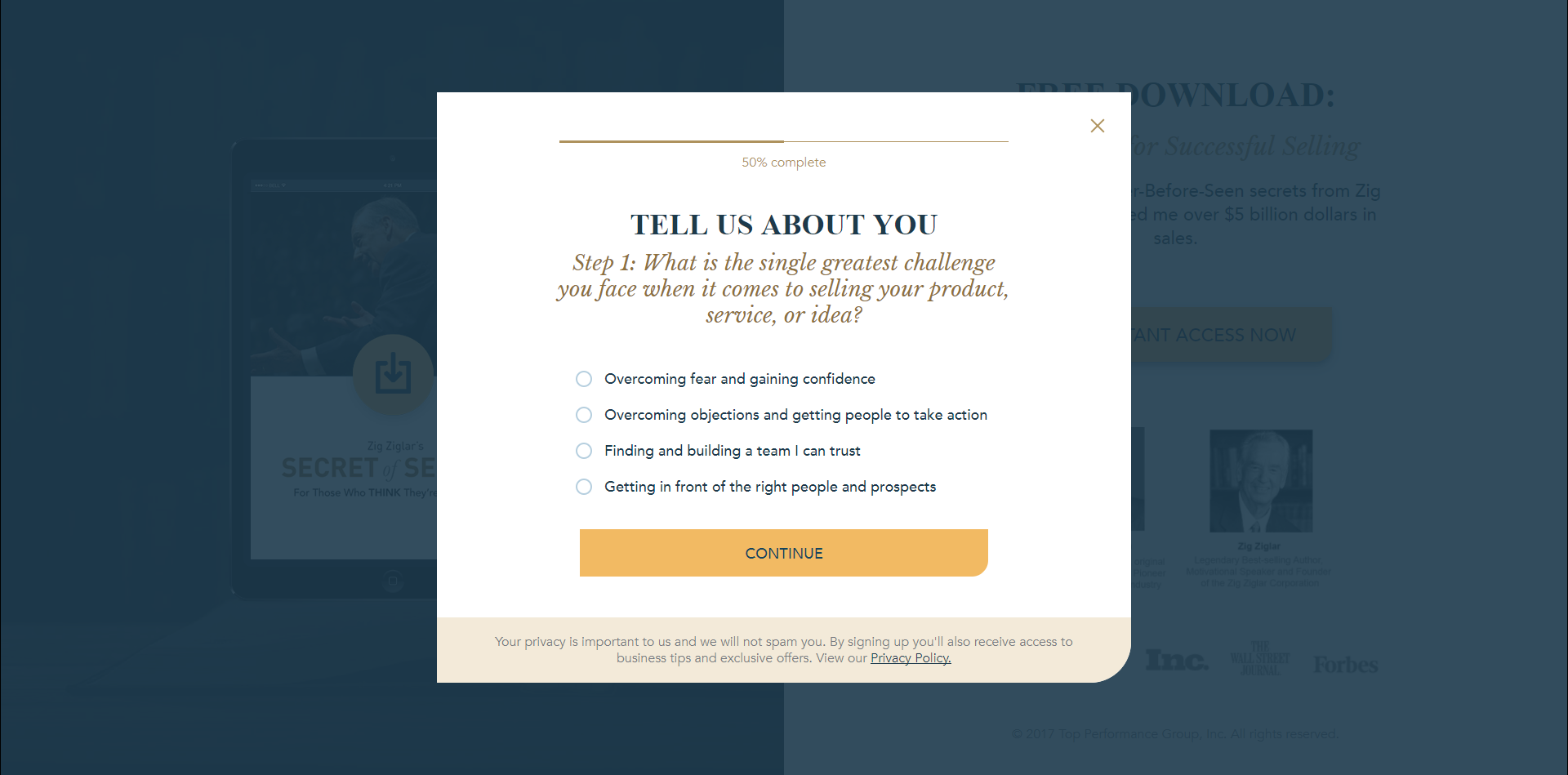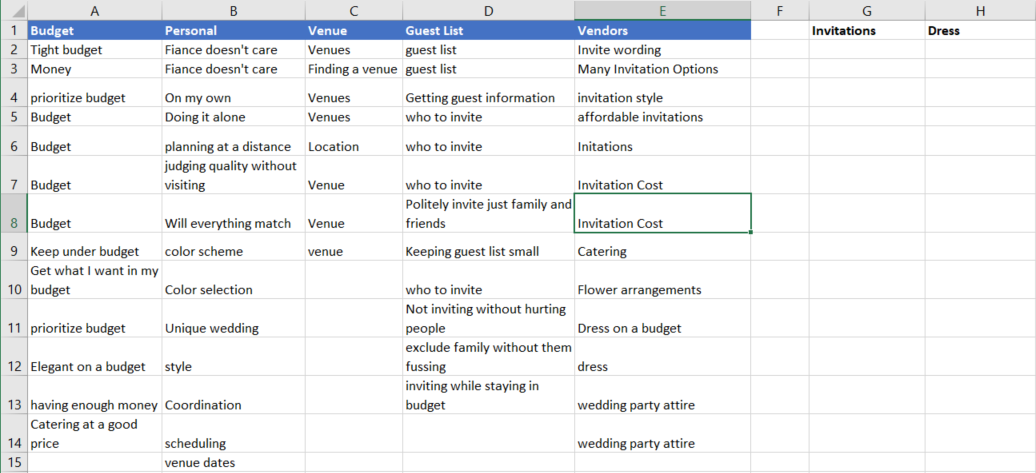The Subtle Technique Apple Used to Become the Most Profitable Company in the World
by Ramon Abreu
In July of 1997, Apple Computer, Inc. was on a one-way road to failure.
Its product line was a flop, the company lost credibility from missed deadlines, and its stock was at an all-time low.
Twenty years later, the renamed Apple, Inc. is one of the most profitable companies in the world.
In this post, you will learn about one of the main strategies that made that happen.

Want Us to Do This For You?
We have an open spot in our client roster and can work with you to create a customized sales funnel to make you more profitable.
Unique Message Matching
How did Apple do this?
If you look at Apple’s site you will notice there are two main segments, or buckets, in their market.
- Education
- Business

Both have unique pages and messaging.
The products are still the same, but they position the product benefits in a way that would speak to the needs of the given market segment.
Apple is customizing their marketing for each of their major market segments. When they became the most valuable company in the world, they credited this as part of the reason for their success.
Do you know your buckets?
What are the 3-5 major segments, or buckets, in your market?
Not knowing this information will be crippling in the coming years. Consumers now, more than ever, do extensive research because they expect the solution to their problem to be a perfect fit.
Major brands like Apple, Lego, Tesla, and Pro Active quietly use this to their advantage.
Knowing your buckets allows you to better serve and better sell.
The process of researching and segmenting your market has been systematized and turned into what is known as the ASK Method®.
Let’s break this down so you can work it into your business.
Simple Market Research
Finding you buckets starts with one simple question: “What is your single biggest challenge?”
Let your prospect tell you in their own words the problem they are trying to solve.
The “in their own words” part is very important because it gives you the added benefit of being able to use their language to sell to them.
People do not buy products or services, they buy solutions to problems.
The power is in making your solution feel like it is custom tailored to your prospect even if it is not.
That feeling is a result of customizing how you communicate your product or service to each market segment. This is called setting the frame.
This above all else will help you stand out and beat your competition.
If a prospect feels like your solutions are made just for their “unique” situation they are more likely to choose you over the competition, even if you charge more.
Understanding Your Market
When you start talking to your market you will find two groups of people.
- Hyper Responsive – These people are hurting. When you ask about their problem they will go on and on with a detailed response telling you everything. They need a solution badly. These are your most important resource. Listen carefully to every word.
- Non-Hyper Responsive – These people will give you almost no information. You will get short responses you can do nothing with. The difference in responses is fascinating. Some people will write one word, while others will write hundreds.
Score responses by word count and focus on the top 20 percent of your responses.
Determine Your Buckets
You can’t serve everybody.
The questions you need to answer are:
Who do you want to sell to? Who is your best customer? What are the most common gaps in your market?
Bucketing is where we identify and categorize the needs and motivations in our market.
The Bucket Frameworks
When creating your buckets, you want 3-5 buckets that address 80 percent of your market.
You can approach the bucketing process from four perspectives:
- Journey
- Challenge
- Situation
- Hybrid
Journey – Used when your prospect moves in a sequential order.
Example: In the dating marketing, a man would first need to learn how to:
- Approach a woman
- Get her number
- Behave on a date
Challenge – Not correlated and do not occur in a specific order.
Example: Teaching lead guitar
- Effects and equipment
- Improvising
- Practice routines
Situation – This is a holistic approach. Some markets may not face very specific or narrow challenges, but have broad situations. The situation approach can tap into journey and challenges.
Hybrid – The hybrid approach can be a good option if your market combines journey, challenge, or situation approaches.
For example, you may have three journey buckets with two challenge buckets.
Analyze Your Responses
Now we dig into your survey responses. Again, focus on the top 20 percent of responses determined by their score.
Read each one and pull out 1 – 3 themes per response.
Take the themes and put them into a new spreadsheet organized by a title. These are your buckets.
The buckets may be broad and scattered at this point. There is still work to do.
Remember, we want 3-5 buckets that address 80 percent of your market.
The second rule is one bucket should not contain more than 50 percent of your market.
Begin condensing and combining buckets until you reach the goal of 3-5 buckets. You may have a few themes that do not fit into your buckets and that is normal.
How do you determine the percentage of your market you are serving?
Count each theme in a bucket and divide it by the total number of themes.
It’s not an exact science, but we are not trying to publish a paper. We want to better understand and serve our market.
The Perfect Message – Setting the Frame
Up until this point, this has been mostly prep work.
The real magic of the process is what happens next.
Now you know your market better than most. What that means is you know, without a doubt, not only what your prospect wants, but why they want it.
Imagine being able to take one-to-many marketing messages and making them feel personal and one-to-one.
In a one-to-one conversation, you can react with the other person. You can see how they respond to certain benefits. You can pivot and focus on the points that they connect with the most. You can take the pain points they’ve shared and really highlight and solve them.
Here’s a teaser, this opens the possibility of automation. Lower costs and higher profits.
It takes a little extra work to get there, but it’s worth it. This has been proven in dozens of markets.
The next step is to create customized sales funnels for each bucket.

Begin segmenting your leads at the front of your funnel. Create a simple segmentation page to allow the visitor to place themselves in a bucket.

Why do we do this? Why not just go straight for the opt-in and get the lead?
Asking someone to give their name, email and other personal information can be too big of a step. Especially if they are just learning about who you are.
Every new opportunity triggers a fight or flight response. Adding a softball question gives the prospect the opportunity to make a non-threatening micro-commitment. Once people start taking an action, they are more likely to follow through.
Robert Cialdini, Ph.D., writes about this phenomenon in his book Influence: The Psychology of Persuasion.
Cialdini references a study where people were asked to make a small commitment to driver safety by displaying a three-inch-square sign in their lawn that read “BE A SAFE DRIVER.”
Two weeks later, a volunteer asked the homeowners to allow a large service billboard to be installed on their front lawn. They were given a photograph of a house completely obscured by an obnoxious poorly lettered billboard reading “Drive Carefully.”
Normally, 83 percent of people would, of course, refuse this request.
Of those who had before agreed to display the small three-inch sign, 76 percent offered the use of their front lawns.
A name and email doesn’t seem so bad now, does it?
When people take an action, they adjust following actions to appear consistent with what they’ve already done.
Conversion Pages
A conversion page can take many forms. The most common would be a sales page. It can also be a page asking to schedule an appointment or make a deposit.
You will immediately see a higher conversion rate because you can present the offer addressing only the benefits that mean the most to the prospect. It’s a lot like having a conversation with someone and they describe their problem to you. When you can reiterate those issues, they feel understood. When you give them the solution they are sold.
The big customization points are:
- Headlines
- Bullet points
- Testimonials
- Case studies
Next Steps
You now have the beginning of a powerful segmentation funnel that will help you better serve and better sell your prospect. What you learned in this post is enough to get you started and seeing some powerful results.
We specialize in this process and love to help businesses implement the ASK Method®.
I have personally set aside some time to create a free custom marketing blueprint. If you would like to see if ASK is right for you then this is a perfect step.

